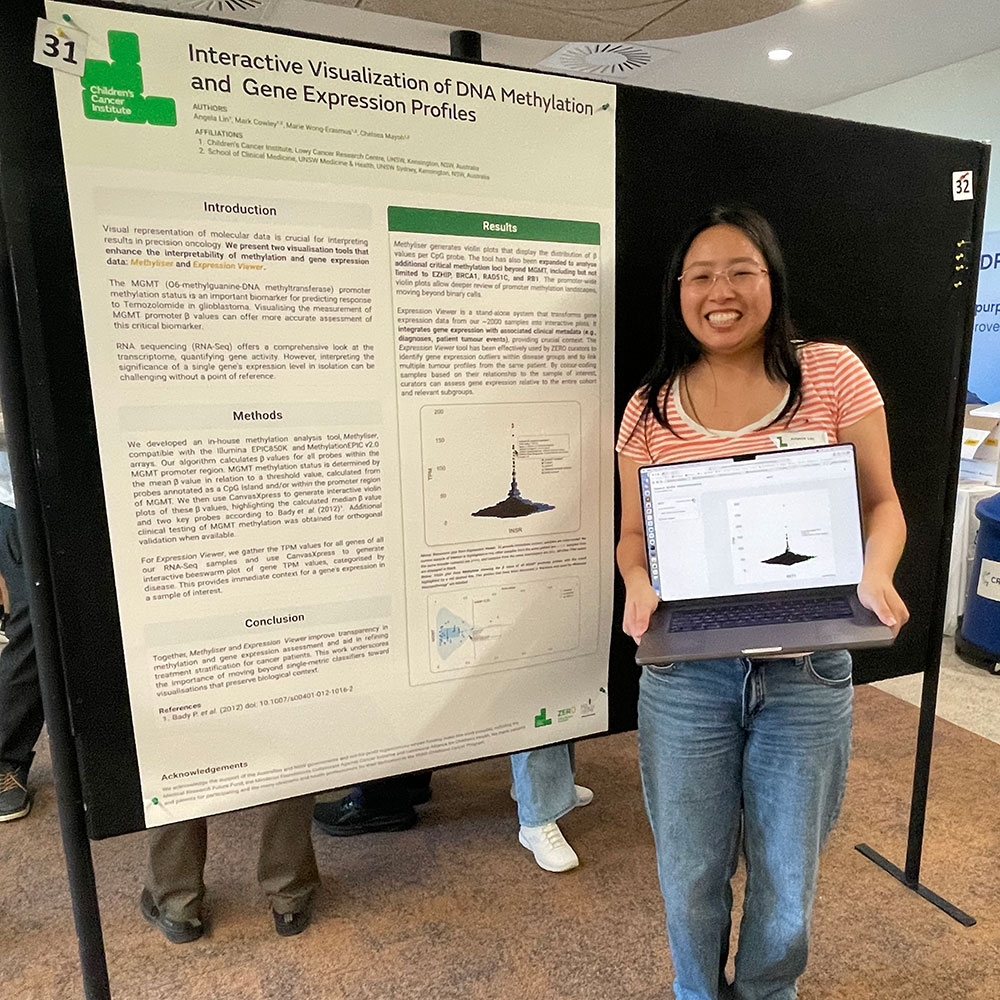Q: Describe the road so far. What brought you to us?
A: “My journey to Children’s Cancer Institute is nearly a round trip. I originally carried out my PhD at UNSW, graduating in 2006. At the end of it, I had just started a family and so found my first post-doc position at the University of Newcastle, juggling science and helping to raise two children.
“Whilst at Newcastle, I was worked on a number of cancers that overexpressed members of the Fat cadherin family. It was on this project that I started to focus more on leukaemia, where the FAT1 cadherin is highly expressed and is a novel biomarker.
“After 6 years I realised I really needed to broaden my horizons scientifically to understand more about leukaemia, and so landed in Belgium in the middle of winter to begin my second post-doc with Prof. Jan Cools. This period really consolidated my molecular biology skills with functional genomics and animal models. I told my wife and children it would be ‘2 years’, but the chocolate, beer and waffles forced us into staying 6 years.”
Q: What is your area of expertise? What skills and knowledge do you bring?
A: “My area of expertise is fundamentally molecular biology and functional genomics – that is modelling how different genetic perturbations interact in driving leukaemia.
“I use a range of different techniques including CRISPR/Cas9, lenti- and retroviral systems, and transgenic mouse models, combined with next-generation sequencing to decipher, identify and exploit genetic dependencies.”

Q: What will be the focus of your team here, and what do you aim to achieve?
A: “The focus of my team (although it’s a team of 1 at the moment!) will be to continue to look at oncogenic cooperation in leukaemia. I hope to understand why certain genetic mutations always seem to co-occur, and what signalling pathways they regulate.
“This will be done with novel transgenic mouse model systems and CRISPR/cas9-based techniques. Knowing this will hopefully help design novel therapies.”
Q: Who else is currently in your team, and/or who are you hoping will join it?
A: “As I mentioned, the team is me. I am busy writing and waiting for grants to come in, but hopefully by the end of the year I will have recruited a post-doc, research assistant and PhD student. Hopefully all much smarter than me!”
Q: Is there a particular reason you chose to work on childhood cancer, or cancer in general?
A: “I can’t remember a time when I was not fascinated by cancer biology. . . there is so much that we still don’t know!
“I like to read about science and there are a few books which everyone should read if they do cancer research: (1) The Emperor of All Maladies: A Biography of Cancer by Siddhartha Mukherjee, (2) Rosalind Franklin: The Dark Lady of DNA by Brenda Maddox, and (3) The Immortal Life of Henrietta Lacks by Rebecca Skloot.
“These stories continue to inspire and remind me how far we have come, but also that there is still so much to do.”
Q: Tell us an unusual/funny fact about yourself.
A: “Last year I won the best costume at the Christmas party – raising the bar for commitment when it comes to parties.”















